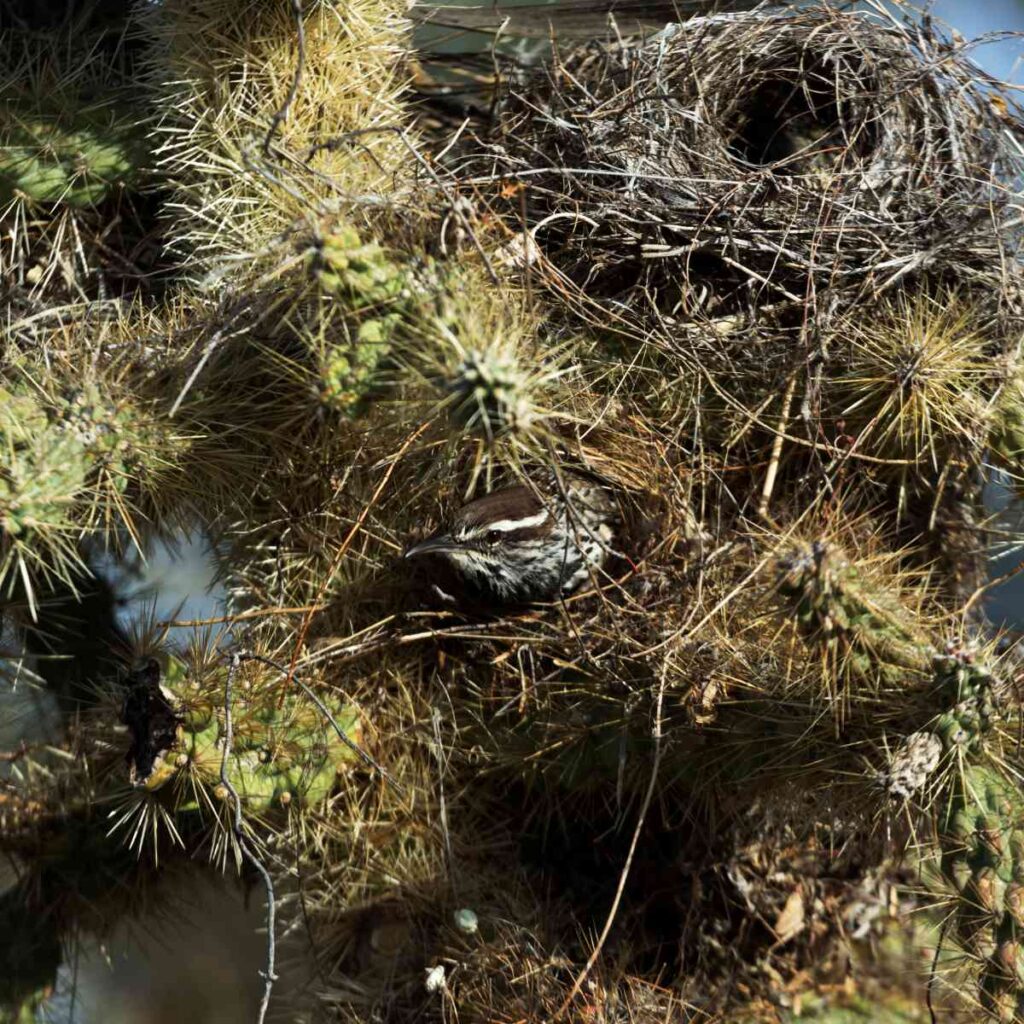Last Reviewed and Updated on February 7, 2023
Did you know there is a bird out there that sounds like a car engine that just doesn’t want to start? Meet the cactus wren, a small bird that is perfectly suited for life in the desert. Find out more about this bird species, from the basics to exploring some of the most interesting facts about cactus wrens.

About Cactus Wren
The cactus wren (Campylorhynchus brunneicapillus) is a wren species most commonly found in the southwestern United States and northern and central Mexico.
It has a signature brown plumage with black and white spots. The chest is white, and the underparts are light orange-brown. This wren has a distinctive white “eyebrow.” Males and females are very similar.
There are seven subspecies of a cactus wren.
They feed primarily on insects but also eat vegetation and seeds.
Cactus wren does not migrate; they have established territories that they occupy all year round.
While their populations have declined (due to habitat loss and other human activities), their numbers are still abundant.
Interesting Facts About Cactus Wrens
Now let’s dive into some fun and fascinating facts about cactus wrens.

1. Cactus wren builds its nests in cacti
Their common name derives from their habits of spending most of their time on or near cactus plants. They usually build their nests in cacti as well.
2. They form permanent monogamous pairs
Cactus wren mate for life. The pair defends the territory on which they live year-round. They usually have two broods every season; however, up to six broods may be attempted each year.
Juvenile birds will stay in their parent’s territory for a while, but most will be driven off by the next breeding season. While they are in the territory, they may help with taking care of successive broods in the same breeding season (source).
3. Cactus wren can survive without free water
They get all their water intake through their diet, so they have no need for free water in their habitat.
4. They use temperatures to their advantage when seeking food
When the temperatures rise, they search for shaded areas with lower temperatures, partially to conserve water and because insects are more sluggish in colder temperatures and thus easier to catch.
5. They are poor fliers (umbrellabird)
Not all birds are great flyers. Some can’t fly at all, some (like umbrellabirds) are not really good at it, and some excel at it. Cactus wrens are one of those birds that can’t brag about their flying skills. This bird is a poor flier and spends most of its time foraging on the ground.
6. They sound like a car engine that won’t start
One of the coolest things about these birds is their vocalization. The main call of the cactus wren is described as a harsh and raspy series of jar-jar-jar, increasing in pitch and noise as they go on. It has been described as sounding like a car engine that won’t start.
7. Cactus wren is the largest wren in the United States
When it comes to birds in the wren family, the cactus wren is the largest wren in the United States. It is also one of the largest in the world, but it shares its top spot with the giant wren and the bicolored wren.
8. Cactus wren is a state bird of Arizona
It is the official state bird of Arizona.
